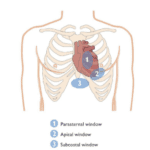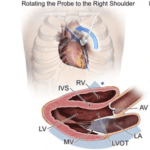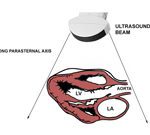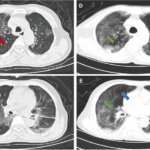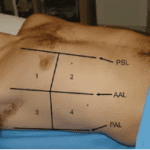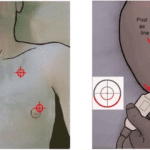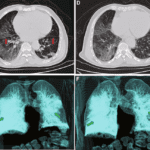A 67-year-old male patient presented to the clinic for routine check up and was recommended for an AAA screening exam. He is a known smoker for the past 40 years. He is also on antihypertensive agents. His blood pressure was 148/90 mm Hg. The rest of his vitals were within normal limits. His primary care physician performed an AAA screening exam. The following oblique view was obtained from the left side of the midline at the level of the lower abdominal aorta and bifurcation. Which blood vessel is the one highlighted in yellow?
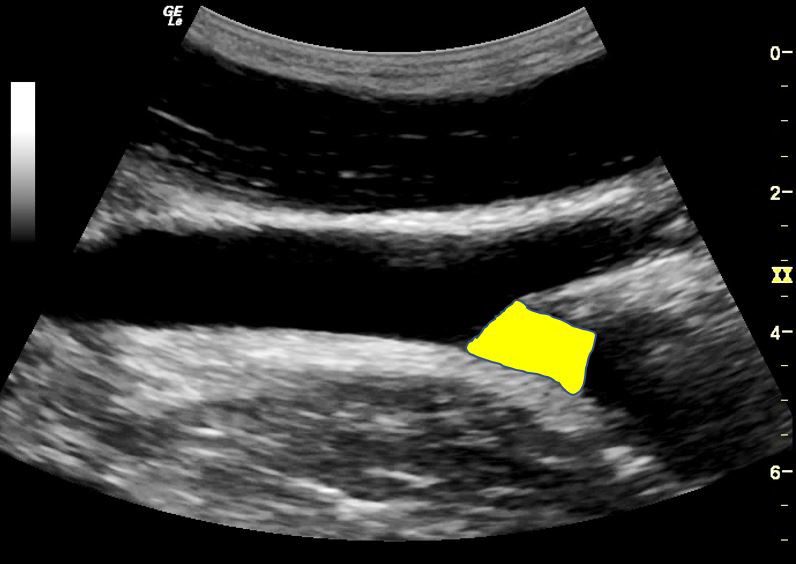
- IVC
- Lower abdominal aorta
- Left common iliac artery
- Right common iliac artery
- We cannot determine which artery it is from the image and the information provided.
Explanation:
From the image alone we cannot tell if it is the left or the right common iliac artery – we need to know which side the view was obtained from. Since we know that the view was obtained from the left side of the abdomen, we can determine that the vessel closest to the skin surface is the left common iliac artery and the one further away from the skin surface – the one highlighted in yellow – is the right common iliac artery. The common iliac artery diameter of more than 1.5 cm would be considered aneurysmal.
_____
Interested in taking your expertise in Abdominal Trauma further? Check out our Abdominal Trauma Certificate here.






